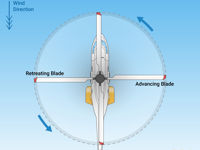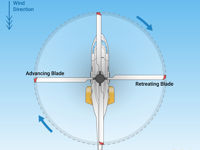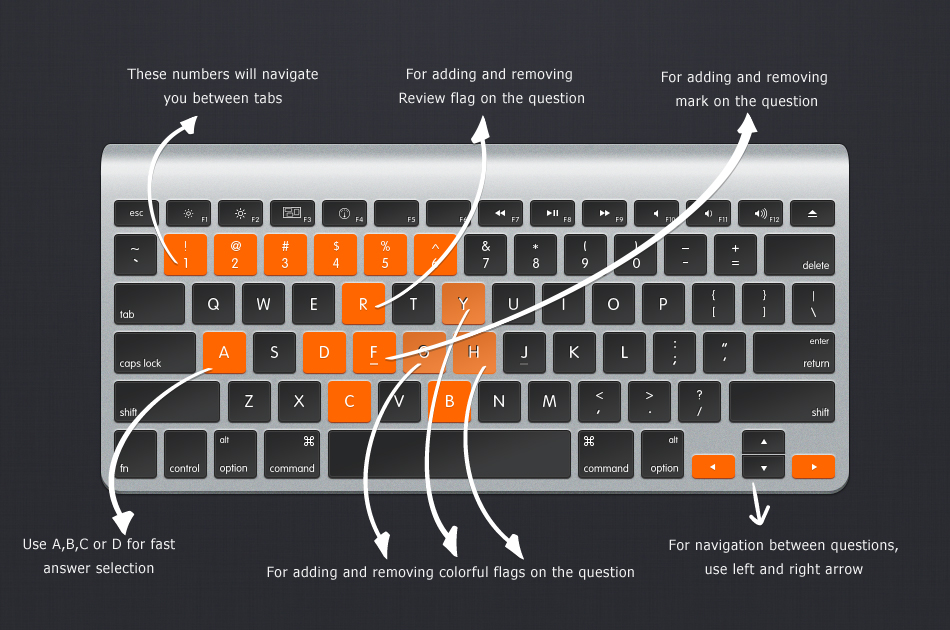On which side of the rotor disc will the rotor blade pitch up, if the cyclic pitch is pushed forward?
Refer to figures.
The blades reach their highest and lowest positions 90° later than the point where they experience the maximum increase and decrease in their blade pitch angles.
This is also referred to as the azimuthal angle, which means the angle between the control input and and corresponding value of a rotor blade in the plane of movement.
This variation between the point of maximum blade pitch angle increase/decrease and subsequent tilt of the rotor is known as PHASE LAG and is ALWAYS NINETY DEGREES (90°).
The angular distance that the pitch-operating arm is positioned on the control orbit in advance of the blade to which it relates is known as the ADVANCE ANGLE.
If the control orbit tilts in the same direction as the cyclic stick is being moved and, as a result of these changes in cyclic pitch, the rotor disc tilts 90° out of phase with the control orbit, then the disc will also be tilting 90° out of phase with the cyclic stick.
Thus, unless the control system is compensated in some way, moving the stick forward would cause the helicopter to move sideways.
We want the disc to be at its lowest point at the front and its highest at the rear in order to transition forwards. That means the upward moving operating arm needs to be 90 degrees before the rear of the disc therefore, on the left-hand (retreating) side of the swash plate for a counter-clockwise rotor system and on the right-hand (retreating) side of the swash plate for a clockwise rotor system.
Your Notes (not visible to others)
This question has appeared on the real examination, you can find the related countries below.
-
United Kingdom






